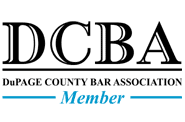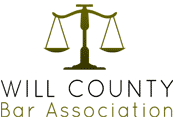Explaining the Process of Collaborative Divorce
As adversarial as most divorce can be, it may seem likely that your divorce could only be resolved in a courtroom. However, the reality is that most divorce cases are settled privately between the parties. Recently, a rising number of divorce cases are settled through collaborative law. The collaborative divorce process is an innovative solution to the often tense and emotional issues that can arise during divorce. Collaborative divorce can be beneficial in many cases, but may not be appropriate in all situations. An experienced divorce lawyer, like those at Fay & Farrow, can help you make this decision.
What is Collaborative Divorce?
During a collaborative divorce, both parties work outside the litigation process to resolve issues before filing a joint uncontested divorce petition in court. This means that the parties will resolve their legal issues outside the courtroom, and then jointly ask a judge to dissolve their marriage once all issues have been settled. The collaborative divorce process is quite involved, and both parties must be willing to cooperate through private negotiation rather than pursuing traditional divorce litigation.
The overall goal of collaborative divorce is to ease the inherent tensions of litigation by disallowing either party to pursue litigation. Instead of focusing on what happens in court, the divorcing spouses can turn their attention to the guidance of their attorneys and other experts to mutually resolve their problems.
The basic structure of a collaborative approach to a family law issue is fairly straightforward: both parties, along with their attorneys and other professionals, work through contested issues together. The first step in collaborative divorce is for both parties and their lawyers to sign a collaborative agreement stating that neither party will pursue or even threaten litigation. If either party breaks that promise, he or she will be required to hire a new lawyer. Collaborative divorce is designed to assist parties who want to maintain a respectful, communicative relationship while resolving contentious family law problems, such as child custody or spousal maintenance (alimony).
After the parties have reached resolution, they will file what is known as a joint uncontested divorce petition. This formal petition for divorce lets the judge know that all issues, such as property distribution and alimony, have already been resolved. So, there is no need for the court to do anything other than legally end the marriage through a final divorce order.
How Is Collaborative Divorce Different from Mediation?
Generally, collaborative divorce is broader than mediation. That is, mediation usually involves the parties settling a few issues privately, while settling other issues through litigation. During a collaborative divorce, litigation is not part of the process. Whether a collaborative divorce is more appropriate in your case than mediation can be a tough decision. Our attorneys can guide you through the benefits and drawbacks of collaborative divorce.
The skilled divorce attorneys at Fay & Farrow have helped countless Naperville residents through divorce. Collectively, our attorneys have over 95 years of legal experience in Illinois. We draw upon that extensive experience to benefit our clients. Contact us today to schedule a free consultation, and learn how we can help.













